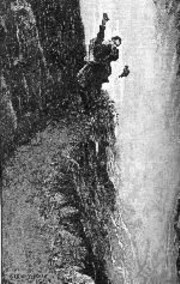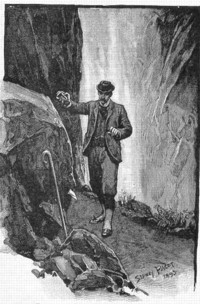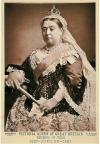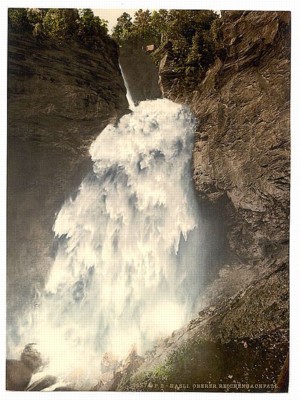
Julian Wolff's Map of
Operation Reichenbach

The Struggle

Holmes' Alpine-Stock
On Thursday, May 12th, fourteen members of the Greek interpreters and two guests met at the Park Lake Grill restaurant in East Lansing for our spring meeting. In recognition of the early May date, the story selected for study was "The Final Problem". The meeting opened with the customary Canonical Toasts to Mrs. Hudson, Mycroft Holmes, the Second Mrs. Watson and The Woman. A quiz concerning events in this story tested the members' recall of details. This quiz and many earlier quizzes may be viewed here.
A spirited discussion of many aspects of the story ensued. Why did Moriarty's henchmen perform so ineffectually in their attacks on Holmes? Why did Holmes not have Moriarty immediately arrested, especially in light of his agents' incompetence? Did the loss of Holmes' body in the Reichenbach torrent indicate a plan by Conan Doyle to resurrect him? How does the quality of this story measure up with others in the canon? These and other questions were argued without complete agreement, as usual.
 Julian Wolff's Map of Operation Reichenbach |
 The Struggle |
 Holmes' Alpine-Stock |
|---|
|
Following the quiz, the meeting concluded, as usual, by reading Vincent Starrett's "221B" poem, and the singing of The Anthem. A new portrait of Queen Victoria now decorates our meeting site, and seems to inspire the latter. |  |
 |
The creation of meringue and the death of Sherlock Holmes are the two claims to fame of the old town of Meiringen. Set at the heart of the Hasliberg hiking region, the town has long been a favourite mountain-walking resort of the English. Sir Arthur Conan Doyle, creator of Sherlock Holmes, stayed in genteel Meiringen many times, and the town's sole attraction is the Sherlock Holmes Museum in Conan Doyle Place. This interesting little den is in the cellar of the English Church, and includes a life-size replica of the detective's study at 221b Baker Street, complete with taped commentary. There is also a rare complete collection of the monthly Strand magazines, which published the Holmes series, and an intriguing article from a 1910 edition of The Times. The newspaper's Geneva correspondent reported that the Swiss railways banned sales of the crime stories because they were considered a bad influence on Swiss youngsters. A bronze statue of Sherlock Holmes by British sculptor John Doubleday adorns the town centre. It shows the detective seated, puffing on a pipe and wearing his trademark deerstalker cap. Those who enjoy a cryptic challenge can spend time trying to discover the names of 60 Sherlock Holmes stories hidden on the statue. As you might expect, the names are only revealed by clues. |